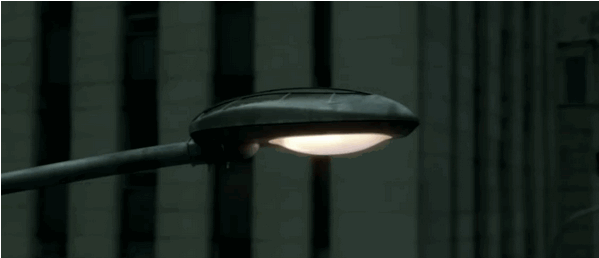In this GE blog entry, staff shed insight into how intelligent lighting can change our environment.
Lighting is no longer just about seeing, but about sensing and connecting to create a brighter environment — in cities, shops and at home.
Harnessing the power of light has been an obsession of humankind since the discovery of fire. Better lighting lets people work more productively, shop more conveniently and feel safer at home.
 |
|
Might streetlights in the future be as smart as these ones? (Photo courtesy of GE Lighting) |
Now, with advances in technologies that combine LED lights with sensors, lighting is moving beyond just productivity and security to function as a gateway to connectivity. It’s enabling the development of more intelligent urban landscapes, more personal shopping experiences and more convenient home living.
“Light is more than you can see,” said Beth Comstock, GE’s chief marketing officer and CEO of GE Business Innovations, during an event this week on the future of light.
“LEDs are just this incredible base of hardware to embed the sensors and controls needed to layer up data and analytics,” says Comstock. “Once you connect hardware to the cloud, you take that data and you start to be able to see and sense all kinds of things in your home, your business and your city.”
Underscoring the potential to upgrade the lighting stock to a more enlightened state of awareness, she cited projections that about 70% of businesses and half of consumer households are expected to adopt LED lighting by 2020.
Add connectivity to all this lighting, and it opens up the possibility to a brighter environment. Here are a few of the ways that intelligent lighting is already having an impact:
Brighter Cities
San Diego may be famous for its gas lamps, but LED lighting is what will help create “next smart city of the future,” says David Graham, the city’s deputy chief operating officer.
Earlier this year, San Diego started working with GE Lighting to outfit some 3,000 streetlights with energy-efficient LEDs, as well wireless control technology that automatically adjusts brightness. While the anticipated annual savings of a quarter of million dollars presents a strong business case for intelligent lighting, it’s the power of analytics and open data collaboration that holds the potential to transform urban life, says Graham. The resulting insights could power a range of apps designed to streamline traffic, optimize emergency response and locate parking spots — all while saving electricity.
“The transformative abilities not only for us to analyze the data, but to put it out to the public to come up with whatever their imagination can come up with, is something that a city doesn’t have today,” he says.
The Ultimate Personal Shopper
That seamless parking experience can be followed by a more immersive shopping trip once in the store, as retailers increasingly use connectivity to anticipate their customers’ needs. The LED lights above can offer a more personalized shopping experience by pinpointing shoppers’ locations to within a meter and communicating with their smart devices in real time.
“Enabling retailers to provide shoppers contextual services — with pinpoint accuracy — will introduce a new level of personalization and customer service,” says Cormac Conroy, vice president of product management at Qualcomm Technologies Inc., which is working with GE to bring indoor-positioning technology to major retailers.
Connected consumers increasingly expect a more customized shopping experience, as a recent Google survey shows. While more than 70% of shoppers who use smartphones for research say their device has become more important to their in-store experience, nearly the same percentage reported not finding what they needed — and 43% left the store frustrated.
Having highly accurate location data in real time gives retailers the ability to create tools to engage customers with custom coupons, suggested items and an “endless aisle” of products not on the floor. “There are a whole host of analytics that can be built on top of that accurate indoor location information,” says Conroy, including using data to improve business operations and ensure the products people want are in stock and easy to find.
Home Living at its Most Convenient
“The Jetsons” has long captured the public’s imagination, driving expectations toward a set vision of the future inhabited by robot butlers. While advances in robotic technology has in some ways turned sci-fi into reality, the smart home is evolving along a different path — one that allow you to monitor and control your home environment from afar away with a few taps on a smart device.
Yet misconceptions about cost and complexity have hampered adoption — with only a third of respondents in a recent survey seeing smart home technology as a good value. One limiting factor is interoperability, says Tom Kerber, director of home controls and energy research at Parks Associates — with consumers expecting that the smart thermostat they buy from one company will be compatible with the intelligent AC they buy from another.
The LED could help drive adoption, integrating with other smart products to provide a more seamless experience, GE’s Comstock said in announcing an intelligent LED light bulb that’s compatible with Apple’s HomeKit. “Lighting is how many first experiment with the idea of a smart home, and our insights show that consumers want the ability to control lighting from anywhere, automate lighting and pair lighting with other devices — like sensors, thermostats and door locks.”
Collaboration could also be key to devising the products consumers want, with companies like Quirky working with inventors to develop an ecosystem of home devices that adjust to your habits.
Like intelligent cities and connected stores, the smart home will continue to evolve in unexpected ways. As Ben Kaufman, Quirky’s founder and CEO, has said, the “smart home is the future — but it’s not necessarily the future that was depicted way back when.”












